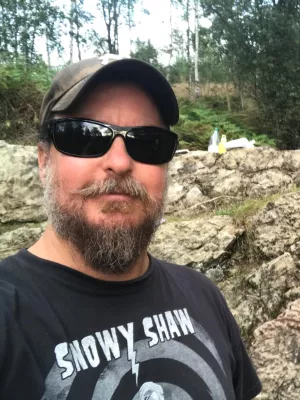
Mats Eriksson
Professor

Agnostus pisiformis — a half a billion-year old pea-shaped enigma
Author
Summary, in English
The Cambrian arthropod Agnostus pisiformis (Wahlenberg, 1818) is not only a beautiful fossil animal, approximately 1 cm in length when adult, but also an extinct species unusually well-known from its ‘soft’ ventral cuticular structures. It is moreover very useful for biostratigraphic correlation and has a long research history. The species occurs in huge numbers, and in all developmental stages, in rocks belonging to the Alum Shale Formation in Sweden. Here it can be found in both shale and limestone (‘Orsten’) nodules, sometimes excellently preserved. In this study, we present a review of the species, including an account of its research history, spatio-temporal distribution, biostratigraphic utility, anatomy, ontogeny, and inferred mode of life, together with the characteristics of its host rock. Furthermore, herein science meets art to describe the process of how we successfully were able to ‘breathe life’ into this important fossil species by constructing greatly enlarged and highly detailed three-dimensional sculptural models. Three different versions were produced, including one with the test completely enrolled (i.e., animal in inferred protective mode), one with test slightly gaping (i.e., animal in active ‘swimming’ mode) and a ‘fake SEM’ version (i.e., showing how the actual miniscule fossils are perceived when studied in a scanning electron microscope). Replicas such as these fulfil very important purposes as they can be used for research as well as teaching and outreach, allowing scientists and laymen alike to study minute, extinct organisms first-hand and up close. One of the ultimate and also long-term goals of these A. pisiformis sculptures is to include them into a traveling exhibition on life in the Cambrian seas.
Department/s
- Lithosphere and Biosphere Science
Publishing year
2017-10-01
Language
English
Pages
65-76
Publication/Series
Earth-Science Reviews
Volume
173
Full text
Links
Document type
Journal article review
Publisher
Elsevier
Topic
- Geology
Keywords
- Agnostus pisiformis
- Cambrian
- Exceptional preservation
- Phosphatization
- Reconstructions
- ‘Orsten’
Status
Published
ISBN/ISSN/Other
- ISSN: 0012-8252

